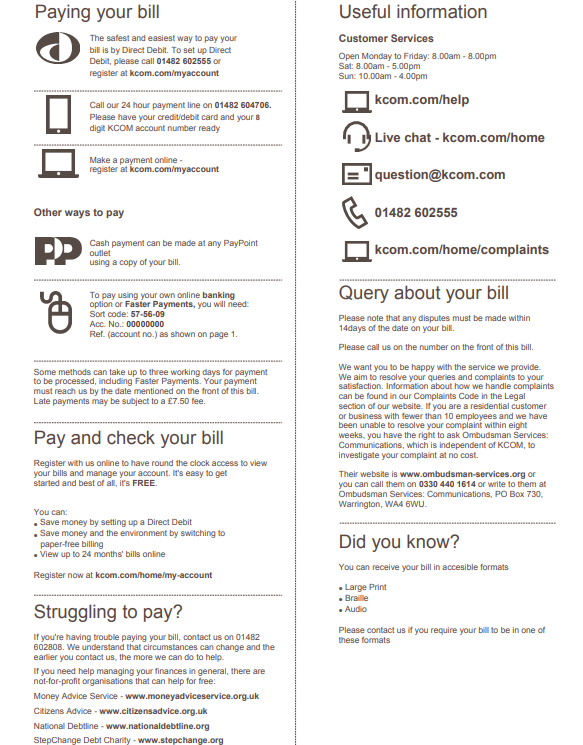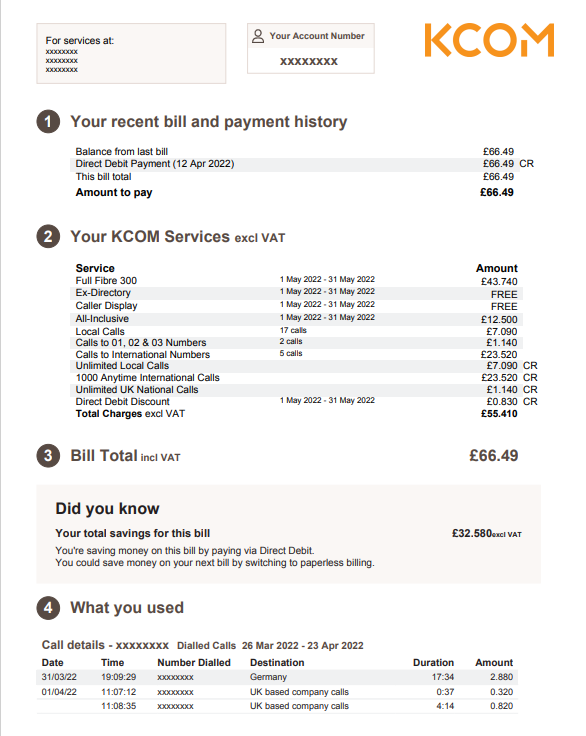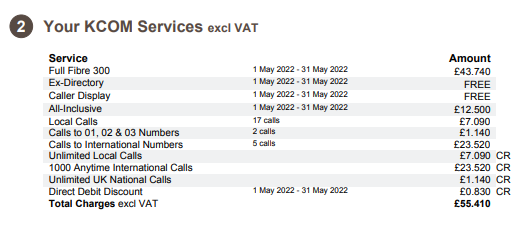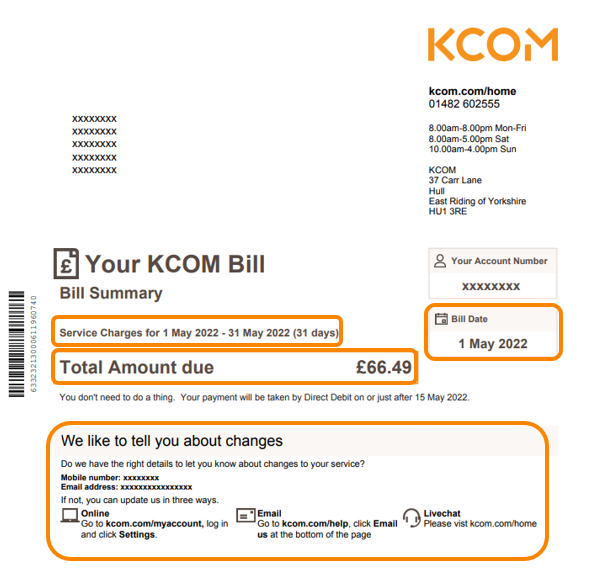Understanding your bill
Written by KCOM Support on 30/04/2025. Posted in Billing.
Our aim is to make your bills as simple as possible by only including information that's necessary. Despite this, we get questions about them all the time. Before you contact us however, we've put together the following guide, to highlight some of the key information and what it means.
Contents
Introduction
The bills we send you contain some important information. Here we'll break down what information your bill contains and what it means.
Video Explanation
Front Page
The front page of our bill contains some key points:
![FrontPage]()
Service charges & Total amount due:
- Service Charges tell you the period you're being billed for, normally one month. If you've recently joined KCOM or have changed your package, this period may cover more than one month, resulting on the Total Amount Due being higher.
- This section also shows you the date of your bill and in the example shown, when approximately your payment will be collected by direct debit. If you're not a direct debit customer, it will inform you when your payment is due to reach us.

We like to tell you about changes:
It's important that we tell you of about any changes to your service. In the section below we like to check we have your contact details up to date. If they are great, no further action is required if not, this shows you the way's in which you can update them.
Page 2
Page 2 of your bill contains lots of useful information on ways to pay your bill on the left-hand side. The right-hand side details how you can contact us if you need any help with your bill.
Page 3 - The breakdown
This page contains a lot of information, including showing which charges are inclusive or exclusive of VAT, so let's break it down:
1. Your recent billing and payment history:

2. Your KCOM Services:
This section contains the information on the services, extra charges and credits for your account.
You'll see the monthly rolling services first, after which you'll see any extra charges, for example calls, and then you'll see the credits which have been applied for call bolt-ons and other discounts such as direct debit and paper-free billing.
Your total savings are also shown in section 3.
3. Bill Total:

4. What you used:
Section 4 provides an itemisation of calls made (excluding local calls). Although the itemisation shows a charge on the right-hand side under 'Amount', if the call was included as part of your bolt-on, this will have been discounted in section 2.
We hope this article has helped you to understand your bill. If you still have questions, please visit our contact us page
Was this article useful?


 Something to note
Something to note